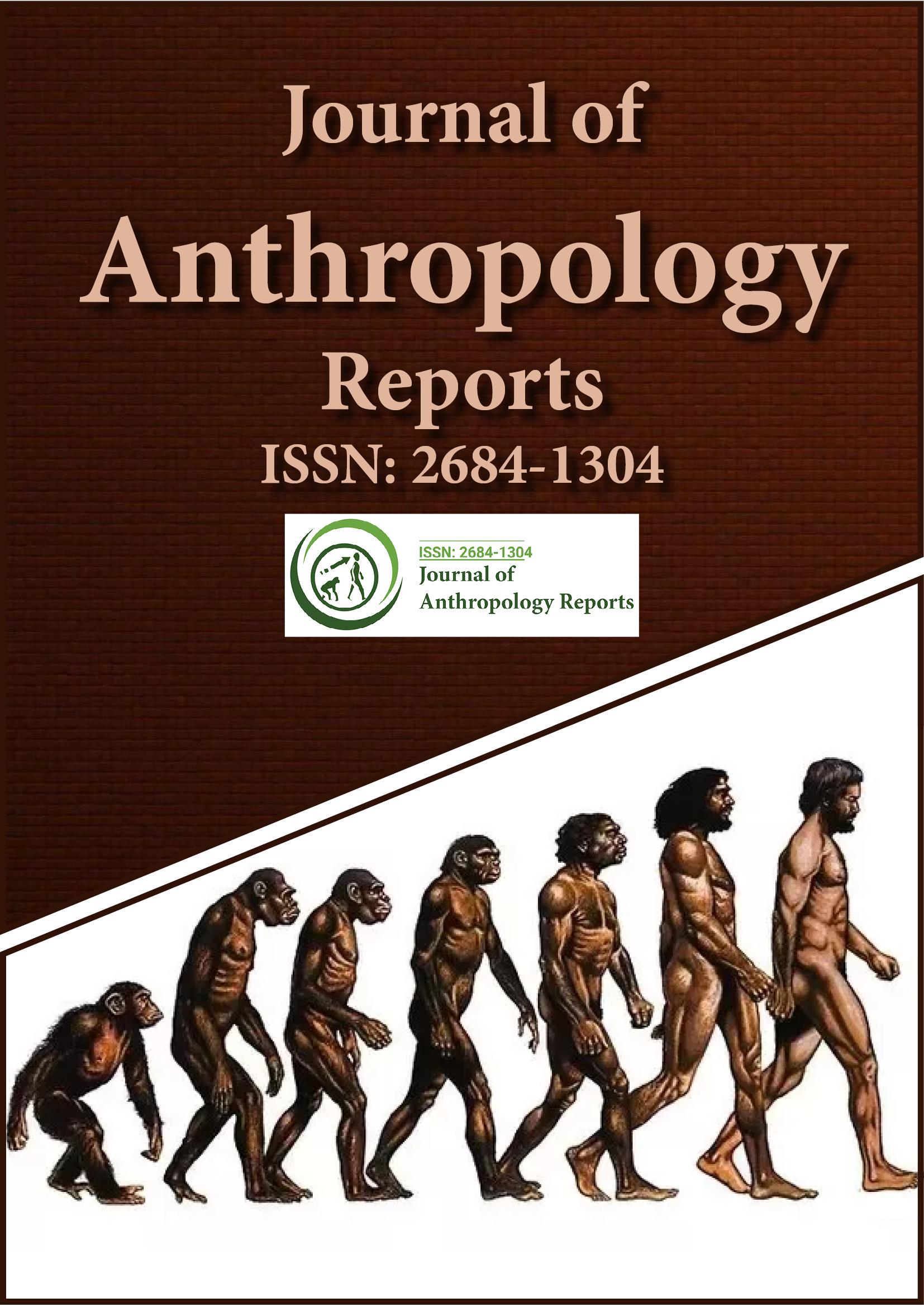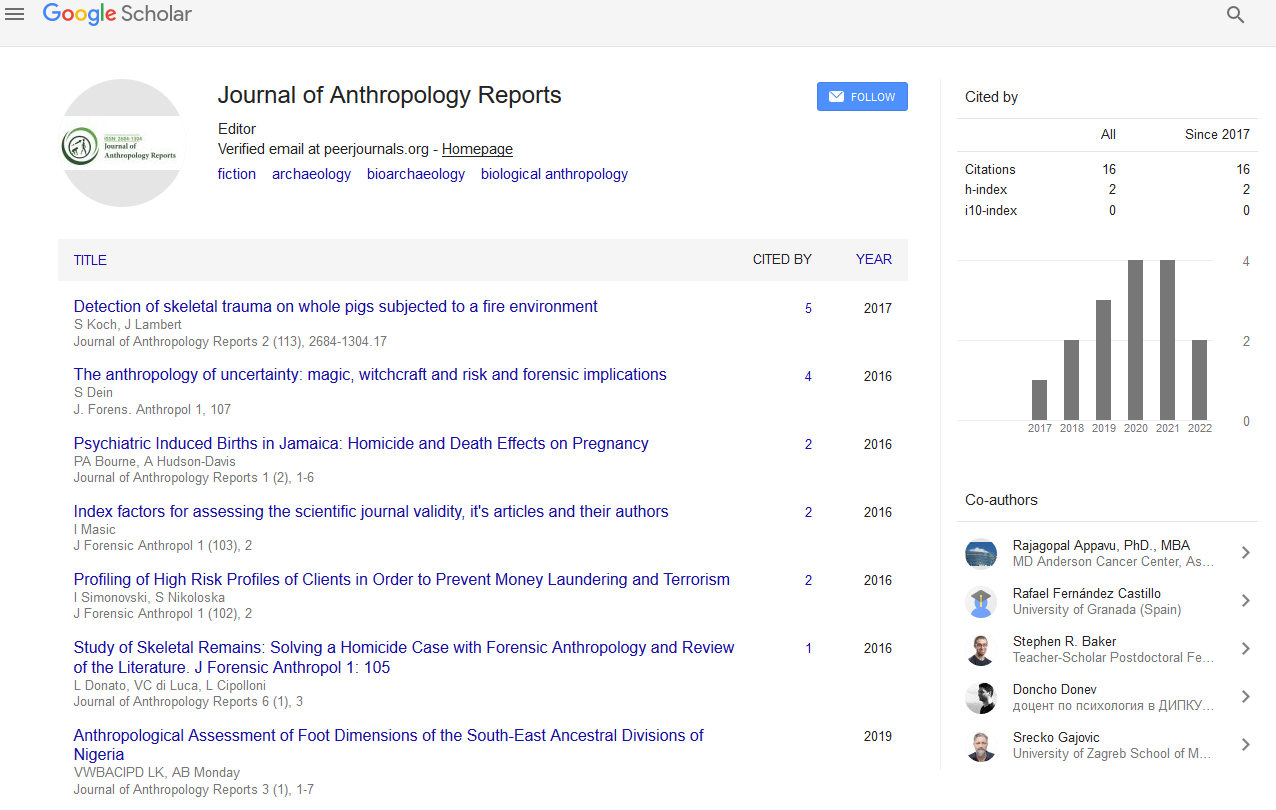Indexed In
- RefSeek
- Hamdard University
- EBSCO A-Z
Useful Links
Share This Page
Journal Flyer

Open Access Journals
- Agri and Aquaculture
- Biochemistry
- Bioinformatics & Systems Biology
- Business & Management
- Chemistry
- Clinical Sciences
- Engineering
- Food & Nutrition
- General Science
- Genetics & Molecular Biology
- Immunology & Microbiology
- Medical Sciences
- Neuroscience & Psychology
- Nursing & Health Care
- Pharmaceutical Sciences
Abstract
Forensic Research 2016: Are We Contaminating Victims in Sexual Assault Referral Centres?-Lucy Love-Mountain Healthcare
Lucy Love
Forensic DNA examination is a comparatively new field, first developed in 1985, by Sir Alec Jeffreys, a professor of Genetics at Leicester University. DNA profiling was then implemented worldwide using amplification by polymerase chain reaction (PCR) and repeating sequences variable number tandem repeats (VNTR). In the 1990s VNTRs were replace with short tandem repeats (STR) and by the year 2000, the first commercial kits became accessible for forensic DNA analysis. DNA profiles record the variation at a defined number of locations [loci] in the person’s DNA. DNA 17 is one of the most recent DNA profiling technologies based on 16 STR loci and a gender identifier. However this quickly developing field and DNA 24 is now used in Scotland. The advantages of this technology are that it allows improved discrimination between profiles, thereby greatly reducing the probability of getting a chance match between 2 unrelated individual’s DNA profiles. The disadvantage of such sensitive technology is the possibility of contamination.
Method:
I was the Clinical Director of g4s Forensic and Medical Services from 2013 to 2015, so i was well placed to access data on environmental monitoring from the six SARCs, which we managed in the UK. These includes SARCs in Essex, West Mercia (2 SARCs, Worcester and Telford), West Midlands (2 SARCs-Walsall and Castlevale) and Dorset. I consulted the UK guidelines from the FFLM (Faculty of Forensic and Legal Medicine] on the collection of forensic samples these guidelines say that “reasonable steps must be taken to reduce contamination including the use of double non-sterile gloves throughout the sampling process.” At the time of my study, between 2013 to 2015, there was no consistent policy in the UK for SARCs, some suggested wearing scrubs, bare from the elbow down, others advocated paper gowns or just a plastic apron I am also consulted SANEs (Sexual Assault Nurse Examiners) in the USA on their uniform policy. My study required an overview of SARC cleaning processes and it became apparent that SARCs in the UK had no consistent cleaning policy in some SARCs, private cleaning companies were contracted by the Police to clean the SARC, in others, the Crisis workers, who are employed by the SARC to support the victim were also trained to clean the examination room to forensic standards. In all the SARCs, i studied; the examination room was also deep cleaned every 3 to 6 months following the completion of environmental monitoring, when areas of the SARC were randomly sampled for DNA. I reviewed this environmental monitoring data from the six SARCs.
Results:
Environmental monitoring categories were reported as follows. Background: Background contamination-No further action but need to monitor long term trends. Interpretation of Data and Discussion The environmental monitoring data revealed 10 Level 1 and 9 Level 2 contamination incidents. The results do shows that SARCs which had simply one examination room such as Castlevale and Telford had lower rates of contamination and this probably reflects the fact that they were not nearly as busy with a much lower throughput of victims than those larger SARCs with 2 examination rooms. Both SARCs cleaned by private cleaning companies and SARCs cleaned by crisis workers showed levels of contamination, so there was no evidence that crisis workers performed less well at cleaning than the private cleaning company. The laboratories were reporting contamination differently, which made it difficult to interpret the data, but whichever terminology was used, there was a level of contamination found. There was also inconsistency in the number of swabs taken for environmental monitoring purposes. I looked at where in the SARC contamination was found and what impact this could have. In SARC-1, a level 2 contamination was found on the TV remote control in the forensic waiting room and even this could potentially contaminate the victim prior to the examination. Higher risks of contamination were also apparent as the desktop, examination couch, worktop where samples were bagged up and the colposcope in the examination room were found to be contaminated and could potentially have led to a miscarriage of justice. The results from environmental monitoring do show that SARCs in the UK should learn to clean more thoroughly, with the correct and recommended cleaning materials but there should also be consistent use of protective clothing by doctors, nurses and crisis workers to reduce contamination. Even biros taken into the examination room could be a potential source of contamination. SANEs (Sexual Assault Nurse Examiners) consulted in the USA, informed me that they wear scrubs with scrub jackets to cover the bare forearms whereas Nurses in the UK were often wearing scrubs only, which were bare from the elbow down and therefore a potential source of contamination. SANEs were also using face masks for the duration of the genital examination and forensic sampling. New guidelines on DNA anti contamination measures in SARCs have been produced in 2016 by the Forensic Regulator in the UK, which aim to minimise the inadvertent transfer of DNA material during an examination. The forensic regulator has recommended that SARC staff do not have contact with multiple individuals linked to the same crime and there should be a reduction in the number of people present in the examination room. They advised just a nurse or doctor and a crisis worker but no Police Officer. They advocate an increased frequently of deep cleaning from 3 monthly to monthly. Disposable clothing such as scrubs should be worn with disposable sleeve covers and a double gloving technique. They also recommend face masks and hair nets, however there is a careful balance to strike here with Forensic needs versus Victim needs as victims may unfortunately see themselves as” dirty and contaminated by the rapist” .
This work is partly presented at 5th International Conference on Forensic Research & Technology October 31-November 02, 2016 San Francisco, USA.
Published Date: 2020-07-30;

